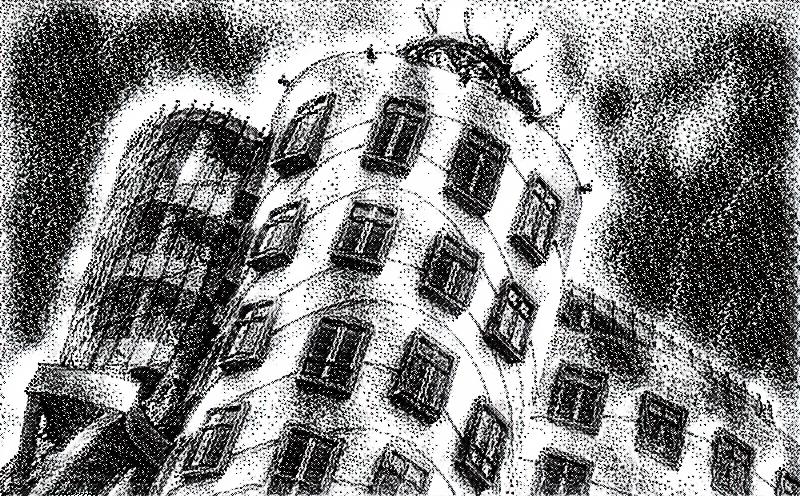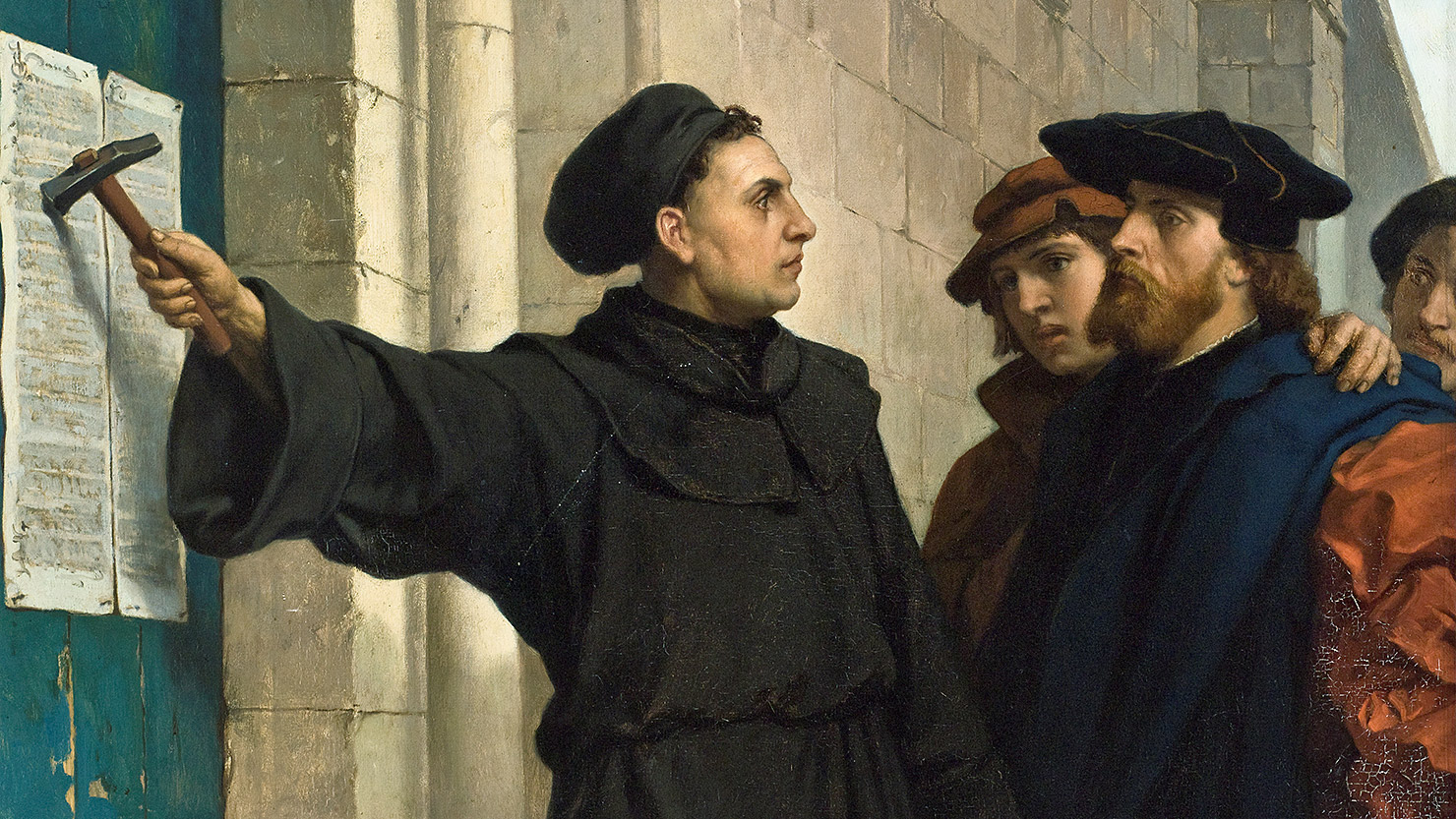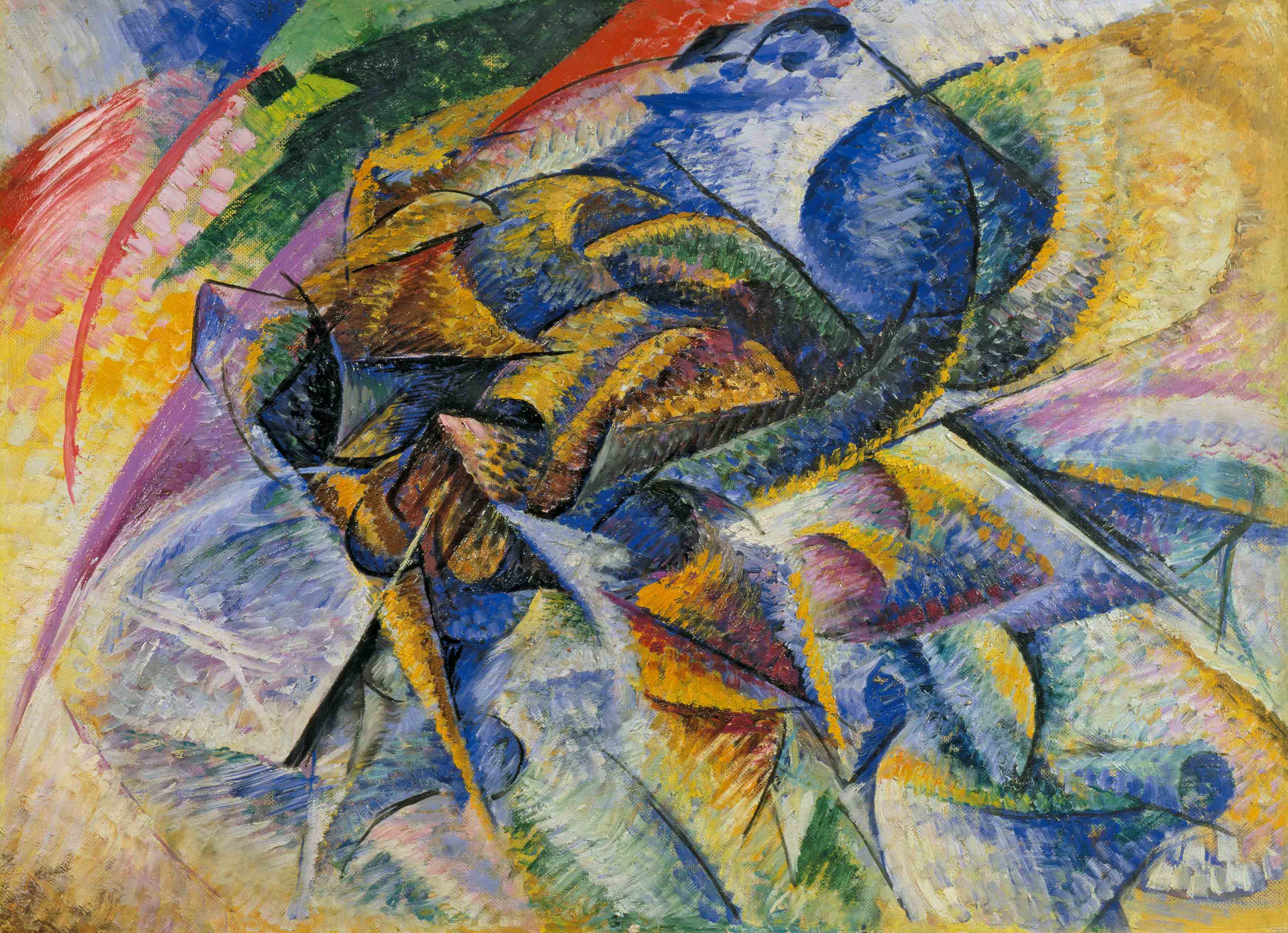The following is the second installment of a three-part series. The first one can be found here.
Deconstruction in Context
If deconstruction problematizes the idea of a ‘pure’ logical structure, devoid of content or any other extra-logical factors, then we find ourselves forced, by deconstruction’s own logic, to question the extra-logical factors of that logic. We can think of this as the relationship between the structures of experience, on the one hand, and the experience (or content) of experience, on the other. This content of experience—even of the structures themselves—is conditioned by the context in which those experiences take place.
Indeed, this is precisely the distinction between Kantian transcendentals and Derridean quasi-transcendentals—for Kant, transcendentals are “pure,” devoid of content in and of themselves though they are always filled by content that remains extrinsic to those forms. That is to say, structures of experience, for Kant, operate by an intrinsic necessity to be put in contact with extrinsic factors: while a priori structures are always experienced with content-filled experience, we can (at least logically or theoretically) distinguish between those structures and that content, and can do so “purely”: there are (again, at least logically or theoretically) “pure” a priori structures, devoid of content, and “pure” content, devoid of structure.
But such purity is precisely what Hägglund (I think correctly) claims Derrida renders at least problematic, if not downright impossible. For Derrida, the very structures of experience themselves are never “pure,” but are inherited (and not just inhabited) in particular ways.[1] So, when Hägglund claims that “Caputo and a number of other influential readers of Derrida have misconstrued the logic of the relation between the unconditional and the conditional” (137; emphasis added), he means to say that Caputo’s use of the language of the ‘unconditional’ is a logical problem, a violation of “the distinction between the conditional and the unconditional [that] is therefore a logical distinction” (138).
And, again, his later statement that “The messianic is therefore not an endless waiting for something that never comes, but the structure of faith in the here and now” (148) accuses Caputo of a logical error, a metabasis eis allo genos: taking something as being part of one category (i.e., of the experience of experience) that is, in fact, part of another category (the structure of experience).
Rather, one should perhaps say that the messianic is “a universal, formal structure upon which the very movement of justice, and hence of deconstruction, turns” (emphasis added). While this quote sounds as if it could have come from Hägglund, it in fact comes from Caputo,[2] and suggests that the difference between Caputo and Hägglund, when it comes to the logic of deconstruction, is perhaps not as large as either of them seem to think. As such, Hägglund’s diagnosis of a category mistake is correct—but misapplied.
The problem is not in taking a logical structure to be an empirical reality; rather, the category mistake here is in employing a logical solution to an extra-logical problem. Hägglund’s attempt to counter Caputo’s misconstrual of the unconditional by claiming that “What is ‘called’ for by the unconditional is not something unconditional (e.g. unconditional love) but rather acts of engagement and performative commitments that are conditional responses to an unconditional exposure” (137) avoids the real point of disagreement between the two, since: a) Caputo would not, I think, disagree with this claim (as we will explore below), given that, b) while the (logical) distinction between “nonperformative exposure” and “imperative injunction (call or performative)” that Hägglund discusses in great detail (137-138) is correct, it does not speak to the issue at hand.
The difference between Hägglund and Caputo is not, precisely speaking, a logical difference, not a difference in the understanding of the logic of deconstruction. Caputo can affirm the logical distinction between the conditional and the unconditional while still speaking of a call or injunction in relation to the unconditional so long as he is not conflating the unconditional wholly with a call or injunction, but is stating instead that an “imperative injunction” is at work already within the “nonperformative exposure.”
The logic of deconstruction does not speak against this possibility, and perhaps even necessitates it, given its own logic of intercontamination and autoimmunity. If this possibility is granted, then we can understand Caputo as claiming precisely that the call to love, to justice, etc., is a call already within the “nonperformative exposure” itself, that is, within the very structure of (our) experience. As such, and despite how he might sound sometimes (and Hägglund does provide some seemingly damning quotations in his article), Caputo would not be claiming that the unconditional is something that we are called to live out—that, somehow, by the “grace of God,” we will be able to live unconditioned lives or unconditioned anything—but rather that our “unconditional exposure,” in Hägglund’s language, is not, itself, a pure and neutral exposure, but is instead an exposure that is always already inflected by certain tropes or themes (love, justice, democracy, etc.).
If this is true, then Caputo would not be arguing that the logic of deconstruction favors God over not-God, but rather that there is something in the extra-logical aspects of deconstruction that support—or could support—such a notion.
To truly examine the debate between Hägglund and Caputo, then, one must examine the extra-logical factors, the “context,” of deconstruction. This context is not simply the philosophical history by which deconstruction was arrived at as a philosophical movement, nor is it merely the historical and biographical factors that shaped the person of Jacques Derrida.
While it would include these things, and others that factored into the “construction” of deconstruction, it would also have to pay attention to the context in which the logic of deconstruction is to be employed, not just the context in which it was constructed. As such, for the debate to truly get at the point of real contention, it would have to evaluate Caputo’s arguments that: a) the logic of deconstruction ought to be deployed in religious contexts; b) we ought to use that logic in support of ‘good’ things over ‘bad’ things; and c) that Derrida would say that Justice, Democracy, etc., are ‘good’ things we ought to try to support.
The first of these three claims Hägglund would not seem to contest, at least insofar as it does not seem to be contradictory to the logic of deconstruction. Hägglund himself suggests that “what should be done cannot be settled on the basis of radical atheism” (150), that is, on the logic of exposure, but rather that our passion to do something—to do anything—requires that logic’s being always already operative. As such, he would seem to have no complaint against using a careful analysis of that logic in a variety of contexts.
That religious contexts could be included here would follow, as long as there is no objection on Hägglund’s part, to the idea of religion itself or in general. And, contrary to some of Caputo’s claims to the contrary, there does not seem to be, since he can claim that there are “any number of situations in which the given structure of a society makes religious discourse the most powerful tool for mobilizing a struggle against injustice” (149).
The second claim—that we ought to use the logic of deconstruction to support ‘good’ things rather than ‘bad’ things—is potentially contentious for two reasons. First, one could contend that deconstruction contains no such ‘oughts,” but is rather neutral. Caputo accuses Hägglund of such ethical neutrality, a point that Hägglund refutes by stating that he does “not reduce the other or alterity to something ‘neutral’ (as Caputo claims). Indeed, I never speak of alterity or the other as ‘neutral’ but rather seek to analyze what follows from the constitutive undecidability of alterity” (142-3, n. 45).
However, if Hägglund wants to claim that the “constitutive undecidability of alterity,” as a logical structure of experience, is itself neither good nor bad but remains politically, ethically, and religiously neutral, then, while he may be right in his defense here, it hardly constitutes a compelling defense. Rather, it merely pushes the critique back one level—now it is not the other who is ‘neutralized,’ but alterity as a structure of experience. But if one reduces deconstruction to a logic, then one implicitly reduces the importance of the other to the structure of alterity, and if this latter is, in fact, neutral, then Caputo’s critique seems to hold (if not necessarily in the manner that Caputo seems to indicate initially).
We see this line of thinking emerge in Hägglund near the end of the article. There, he states “Whether a given struggle should be supported or resisted is a different question, which cannot be answered through deconstructive analysis and requires concrete political engagement. It is precisely by not providing an ethical or political principle of any kind that deconstruction politicizes our actions and insists on a responsibility from which one cannot be absolved” (149-150; emphasis added).
While on the surface Hägglund is right to claim that deconstructive analysis is neither ethical nor political, but instead makes us aware of the necessary conditions for them, by stating it this way he clearly indicates that that analysis itself—the logic of that analysis, of deconstruction—is ethically and politically neutral. Indeed, it is precisely “the priority of the good that informs [Caputo’s] fable of God” that Hägglund “takes issue with” (129).
This ‘taking-issue’ is not only, then, in the prevalence given to the good, but also in the presence of a simplistic distinction between ‘good’ and ‘bad,’ a distinction that is inherently problematic, from the perspective of a deconstructive logic: “evil is intrinsic to the good that we desire. Evil is thus ‘radical’ for Derrida in the sense that it is at the root of the good as such” (131). Challenging this simplistic dichotomy between ‘good’ and bad,’ then, is the second reason one could contest the claim that we ought to use the logic of deconstruction to support ‘good’ things rather than ‘bad’ things.
Clearly, the logic of deconstruction undercuts such a simplistic dichotomy. The question, then, is whether the context of deconstruction (and of every life in general) requires such distinctions, whether or not experience itself requires distinctions, thereby establishing such distinctions as a necessary, but not sufficient, condition for all the responses of life. In this regard, such distinctions would be co-equal with the logic of survival, which is also a necessary but not sufficient condition for life, as Hägglund analyzes it (135).
Such a claim about the necessity of distinctions—and perhaps specifically of the need for a distinction between ‘good’ and ‘bad’—is implicitly operative in Hägglund’s later discussions of the secular and the religious and justice and violence. There, Hägglund is clear that the “notion of radical evil does not seek to justify violence or to reduce all forms of violence to the same” (146), that is, that deconstruction, even the logic of deconstruction, does not seek to do away with the notions of justice or of violence—or the distinction between them—but rather is meant to help us better understand the relationship between them: “The point of this argument is not to discredit calls for justice, but to recognize that these calls are always already inscribed in an economy of violence” (146).
While the necessity of this inscription surely problematizes our understanding of justice (or love or peace, etc.), it does not seem to do away with the distinction itself. To wit, “The point is not only that what I valorize as good can turn out to be bad, or that the deed I hold to be good can turn out to be evil. The point is also that even when I do good—even when I devote myself to someone in a loving or generous way—I necessarily do evil, since my very act of devotion is also an act of exclusion and sacrifice” (145).
The question, then, is whether this necessary intertwining—the co-contamination indicative of autoimmunity—renders the distinction between the two elements obsolete or not. According to Hägglund, it does not. He is adamant that “the temporal finitude of survival,” which is so important to his understanding of the logic of deconstruction, “always entails discrimination” (147). This discrimination is not only logical, but is also evaluatively inflected: “Whatever we do, we are inscribed in an economy of violence where matters are urgent precisely because everything we do makes a difference for better or worse” (147; emphasis added).
This evaluative necessity re-emerges implicitly every time we speak of the “struggle for justice” insofar as such a struggle requires the claim that justice is ‘better’ than injustice. So, while “the struggle for justice cannot aim at achieving a nonviolent peace,” do we not need some notion of ‘peace’ as distinct from ‘violence’ in order to motivate a struggle for justice and against violence? While the two sides of a distinction must be understood as intertwined or co-contaminated—autoimmune—we still must preserve the distinction, for one thing cannot be intertwined with itself, and something can be autoimmune only when it maintains a distinction (in this case somewhat false) between itself and its other: taking itself to be other than itself, it attacks itself as a foreign invader.[3] Paying such rigorous attention to analytic distinctions is important to Derrida, and is what motivates his desire to show more accurately the relationship between the relata.[4]
Finally, then, let us revisit the third claim that Caputo makes in regard to deconstruction, namely that Derrida would think Justice, Democracy, etc. are ‘good’ rather than ‘bad’ things, which is not to say, as we have tried to show above, that one is absolutely good and the other absolutely bad, but merely that we can distinguish—though not ‘purely’—between them and their opposite, and that, for whatever reason, we ought to prefer them to their opposite. It is this question of “reason” that Hägglund raises in response to Caputo, claiming that Caputo does not provide any reason for why we should think that it is better to be more open, rather than less open, to the future.
Since being ‘open to the future’ is how Caputo glosses the preference for Justice, Democracy, etc., as Hägglund ably shows, we must view it as a direct counter to Caputo when Hägglund claims explicitly that “Derrida never aligns any of these terms [gift, justice, hospitality] with the good” (130). Hägglund argues against Caputo’s claim on two points, one logical, one extra-logical. However, it is telling that, in dealing with the extra-logical point, he answers it only by appeal to logic again, so in reality he argues against Caputo on this score only by appealing to logic—which, we have tried to show, is indicative of his argument to this point, and is so necessarily. But we cannot get ahead of ourselves.
First, Hägglund argues that the logic of deconstruction cannot abide the kind of simplistic dualism that seems to be operative in Caputo. “For Caputo to refute my argument, then, he would have to show that there is something in the very claim made upon us by the future that ‘calls’ us always to be more open rather than less, always to expose ourselves more rather than less.
Whatever such an unequivocal call may be—and however Caputo may claim to have heard it—it would by definition deny the undecidability of the future and the responsibility of deciding whether or not one should be more or less open” (144). Here, Hägglund opens the very argument I am trying to make—i.e., that Caputo gets outside the logical claims that Hägglund is making by appealing to the extra-logical factors in the logical structures themselves—but then tries to obviate them by appealing only to the logical factors.
And he is not incorrect—such extra-logical factors do require the logical structures that they constitute in order to have sense themselves. As such, challenging the neutrality of those structures challenges the very conditions that make possible ethical action in the world, including the kind of ethical inflection that would be posited as the extra-logical factors structuring the logical structure, and so would seem to defeat their own possibility. This is similar, structurally speaking, to Hägglund’s argument against religious immortality earlier.
In a footnote, Hägglund then points to the evidence that Caputo gives in support of his claims: that Derrida said, in an interview, “one should only ever oppose events that one thinks will block the future or that bring death with them: events that would put an end to the possibility of the event” (144 n. 47; quoted from Caputo’s article, 39). Hägglund claims that this is merely “an imprecise remark by Derrida,” and one, further, that is contradicted by the logic of the passage in which it is found.
He states that “Derrida’s remark would thus mean that we should not oppose any political events that fall short of being absolutely violent, which includes all forms of political violence that actually takes place,” since only absolute violence could “put an end to the possibility of the event.” Of course, this neglects the inclusion, in the first part of the quote from Derrida, of the phrase “that bring death with them.” Clearly death brings an end to life. Of course, death is only experientially possible, if it is experientially possible, on the conditions of experience, which include “survival,” as Hägglund adroitly shows, and as we have already examined above.
But death is significant here precisely for its stark introduction of non-logical factors into the sphere of life. That is, in death we are reminded that logical structures are always the logical structures of someone, and as such become irrelevant upon that person’s death. This is not to say that death violates those logical structures, but rather that it is of another order than those structures.
While Hägglund is, understandably and probably correctly, concerned about the idea of two distinct orders in deconstructive logic (cf. 136 ff.), this does not cancel out the fact that there might be orders other than that of logic, even for deconstruction, that is, that deconstruction might be more than just a logic. Hägglund contends that “[w]hat Derrida is arguing in the interview, however, is that the coming of the event is not good in itself and that we should not ‘give up trying to prevent certain things from coming to pass (without which there would be no decision, no responsibility, ethics or politics)’” (144n.47), and therefore Caputo’s reading of the situation—as Derrida favoring being open to the future over not being open to the future—is incorrect.
Again, logically speaking, this may be true. But Derrida, like all of us, is not merely a logical animal (some of the rhetoric in the Caputo- Hägglund debate clearly reveals this to be true of them as well). To say Derrida’s remark is “imprecise” is, itself, “imprecise”—one should say, rather, that Derrida’s remark is logically imprecise; this does not mean, however, that it does not precisely reveal something of Derrida’s extra-logical commitments. Hence, Hägglund’s use of the logic of deconstruction, even in opposition to Derrida’s own remarks, is not incorrect, though it is perhaps imprecisely applied.
That is, while the logic itself is sound, one would need a more thorough reflection on the context in which that logic was being deployed, to consider whether or not the use was warranted in this situation (which is, of course, distinct from considering whether or not the logic was well-used, or used correctly once it was employed).
When Hägglund ends his discussion of that quotation from Derrida by stating that “Caputo does not provide any reason for why we should make this inference [that keeping the future open is better than being closed to it]; he merely assumes it” (144n.47), this quote is as damning of Hägglund as it is of Caputo. For, surely, Caputo does give reasons for this assumption—the reasons he gives just appeal to extra-logical (i.e., contextual) factors that Hägglund infers are insignificant for the study of deconstruction. However, he “does not provide any reason for why we should make this inference; he merely assumes it.” Or rather, the reasons that he gives for this inference already assume the prevalence of logic in terms of deconstruction.
Neal DeRoo is the Canada Research Chair in Phenomenology and Philosophy of Religion at The King’s University in Edmonton, Alberta, Canada. Before coming to King’s in 2016, he taught at Brock University and Dordt College and served as the Director of the Andreas Center for Reformed Scholarship and Service. He publishes and lectures worldwide on topics related to phenomenology, oppression theory, and philosophy of religion. He is currently working on a project that uses the concept of expression in phenomenology to show how everything we do in our lives is expressive of a deeper spirituality that shapes us and our society to the core.
________________________________________________________________________
[1] I discuss this in much more detail in Part 3 of Futurity in Phenomenology.
[2] Caputo, The Prayers and Tears of Jacques Derrida: Religions without Religion (Bloomington: Indiana University Press, 1997), 124.
[3] Cf. Derrida, “Faith and Knowledge: The Two Sources of ‘Religion’ at the Limits of Reason Alone,” trans. Samuel Weber, in Religion, ed. Jacques Derrida and Gianni Vattimo (Stanford: Stanford University Press, 1998), 1-78 (cf. especially 73n.27); and “Autoimmunity: A Dialogue with Jacques Derrida,” trans. Pascale-Anne Brault and Michael Naas, in Philosophy in a time of Terror: Dialogues with Jürgen Habermas and Jacques Derrida ed. Giovanna Borradori (Chicago and London: University of Chicago Press, 2003), 85-136.
[4] Hence, Derrida can refer to himself as an “analytic philosopher” in all seriousness; cf. Derrida, “Response to Moore,” in Arguing with Derrida ed. Simon Glendinning (Oxford: Blackwell, 2001), 83-88; 83-84.




